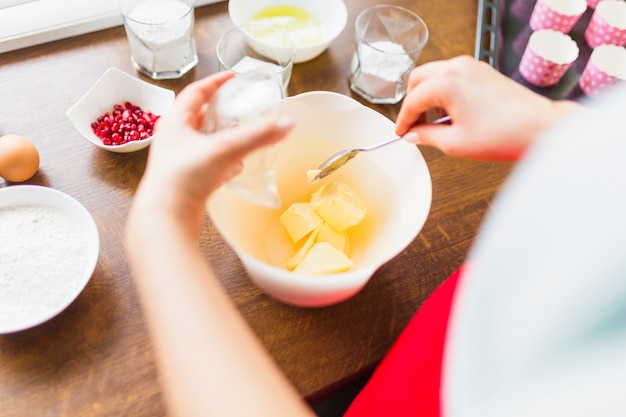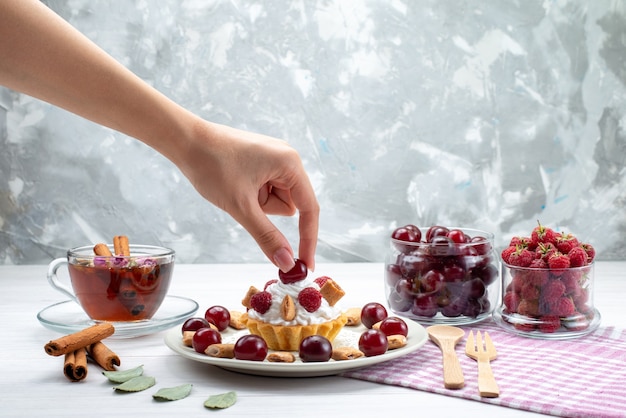Ah, marmalade. A quintessential British staple, a comforting spread for toast, a delightful companion to a cup of tea. For years, I assumed it was this intricate, time-consuming process, the domain of experienced cooks. You know, the kind involving endless boiling, stirring, and a whole lot of patience. But let me tell you, I was wrong! Making marmalade is surprisingly simple and the results are absolutely divine. Homemade marmalade, in my opinion, surpasses store-bought any day.
My journey into the world of marmalade began at my local farmers market. Wandering through the stalls, I stumbled upon a mountain of vibrant, juicy Seville oranges. These oranges, with their distinct tartness and lovely bitter edge, are the secret to authentic marmalade. I couldn't resist, and I ended up carrying a whole bag home. I had no idea what I'd create with them, but I knew they were destined for something special.
That's when I decided to give marmalade-making a go. If I could bake a cake, I figured I could handle a bit of fruit preserving. I found a recipe online that seemed straightforward and I jumped in. It was a breeze! I was astonished by how easy it was. The whole process was quite therapeutic, the aroma of citrus filling my kitchen, a beautiful fragrance. And the best part? The marmalade turned out phenomenal! It had this beautiful, vibrant orange hue, a delightful, tangy flavour, and a satisfyingly chunky texture. It was perfect with my morning toast, and even impressed my neighbour, who couldn’t believe I’d made it myself.
I know what you might be thinking: "Making marmalade sounds like a lot of work.” But I assure you, it's not! It's remarkably simple and a brilliant way to use up those citrus fruits lurking in your fridge. Plus, there's something so satisfying about making something delicious from scratch, knowing exactly what's going into it. And let's be honest, homemade marmalade just tastes better – the flavour is deeper, the texture more satisfying. If you're looking for a new recipe to try, I highly recommend giving homemade marmalade a go. You won't regret it!
(Part 1) The Essential Ingredients

Alright, let's talk about the key players in your marmalade-making adventure. The good news is, it's not a long list, and you probably have most of these items in your kitchen already.
The Star of the Show: Seville Oranges
These are the heart and soul of classic marmalade. As mentioned earlier, they're far more tart than your average orange, with a distinct bitter edge that gives marmalade its signature flavour. They're typically available from January to March, so keep an eye out at your local farmers market or supermarket. If you can't find Seville oranges, don't fret! You can substitute with other citrus fruits like regular oranges, lemons, or even grapefruit. Just know that the flavour will be slightly different.
The Sweetening Agent: Sugar
Sugar is crucial for preserving the marmalade and balancing the tartness of the oranges. You'll need about 1kg of sugar for every 1kg of fruit. I generally use granulated sugar, but you can experiment with brown sugar or even a sugar substitute if you prefer. It's your call!
The Secret Weapon: Water
Water is essential for extracting pectin from the oranges, the natural gelling agent that gives marmalade its set. You'll need about 600ml of water for every 1kg of fruit.
Optional Extras
There are a few optional additions that can enhance your marmalade, adding a little extra flavour or texture. Here are a few ideas:
- Lemon Juice: A touch of lemon juice can brighten up the flavour and add a bit of zing.
- Ginger: A hint of grated ginger brings a warm, spicy flavour to your marmalade, especially great with Seville oranges.
- Spices: For a more complex flavour profile, experiment with a pinch of cinnamon, cloves, or star anise.
- Other Citrus Fruits: Mix and match different citrus fruits for a unique blend. For example, add grapefruit for a slightly bitter edge, or lemons for a sharper flavour.
(Part 2) Getting Started: Preparing the Oranges

Okay, you've got your oranges, sugar, and water. Now it's time to get prepping. This part is quite simple but crucial for the best marmalade.
1. Scrub and Slice:
First, give your oranges a thorough scrub to remove any dirt or residue. Then, slice them thinly. I use a sharp knife to cut the oranges into about 1/4-inch thick slices, including the peel. Don’t worry about the pips; they’ll add a touch of bitterness, which we want!
2. The Importance of “Setting”
This is where things get interesting. Marmalade "setting" is what gives it that lovely, jiggly texture. It’s all about pectin, a natural gelling agent found in the oranges. To achieve a good set, we need to extract the pectin, which is why we slice the oranges thin. This allows the pectin to leach out during the cooking process.
(Part 3) The Magic of Cooking: Bringing It All Together

The oranges are sliced, the sugar is ready, and the water is waiting. Now, for the real magic to happen.
1. Simmering Delight:
Place the sliced oranges in a large, heavy-bottomed pan. Pour in the water and bring it to a simmer over medium heat. Simmer for about 30 minutes, or until the oranges are tender and translucent. You'll notice a thick, syrupy liquid forming around the oranges – that's the pectin working its magic!
2. Adding the Sugar:
After the oranges have simmered for about 30 minutes, add the sugar to the pan. Stir well to dissolve the sugar and bring the mixture to a boil. Keep it boiling for about 10-15 minutes, or until the marmalade reaches setting point.
3. The Setting Point:
Here’s a little tip for checking the setting point. Take a small amount of the marmalade and drop it onto a chilled plate. If it sets within a couple of minutes, it’s ready. You can also use a setting point thermometer, a helpful tool for more precise results.
(Part 4) Finishing Touches: Preserving the Goodness
The marmalade is cooked, it's reached setting point, and it's looking delectable. Now it's time to get it into jars and ensure it stays delicious for months to come.
1. Sterilizing:
Before filling the jars, sterilize them. This will prevent the marmalade from spoiling. You can do this by washing the jars and lids in hot, soapy water and then boiling them for about 10 minutes.
2. Filling the Jars:
Carefully pour the hot marmalade into the sterilized jars, leaving about 1cm of headspace at the top. Wipe the rims of the jars to remove any spills, then screw on the lids tightly.
3. Cooling Time:
Once the jars are filled and sealed, turn them upside down for about 15 minutes. This helps to create a vacuum seal, essential for preserving the marmalade. Then, turn the jars right side up and let them cool completely. You’ll hear a ‘click’ when the vacuum seal is formed, a satisfying sound!
(Part 5) Storage: Keeping Your Marmalade Fresh
Now that your marmalade is cool, it's time to store it properly so you can enjoy it for months to come.
1. Cool and Dark:
Store your jars of marmalade in a cool, dark place. I usually keep mine in the pantry or cupboard. If you live in a warm climate, you can store your marmalade in the fridge to keep it even fresher.
2. Shelf Life:
Homemade marmalade will typically last for about 6-12 months. If you notice any signs of mold or spoilage, discard the jar.
(Part 6) Marmalade: A Versatile Treat
You've made your delicious marmalade, but now what? It's so much more than just a spread for toast!
1. The Classic: Toast
Of course, marmalade is fantastic on toast. It's a classic for a reason! I love it with thick slices of bread, toasted to a golden brown.
2. Sweetening Up Your Breakfast:
Beyond toast, use marmalade to add a touch of sweetness to your breakfast. Try it on yogurt, porridge, or even pancakes.
3. A Touch of Zing in Desserts:
Marmalade can also elevate your desserts. Try swirling it into ice cream, adding it to a crumble topping, or using it as a filling for tarts or cakes. It adds a beautiful tangy flavour.
4. A Flavor Explosion in Baking:
If you're a baking enthusiast, you can use marmalade to add a burst of citrus flavour to your creations. Try incorporating it into muffins, scones, cookies, or even bread.
5. The Perfect Glaze:
Marmalade makes a fantastic glaze for roasted chicken, pork, or ham. It adds a sweet and sticky coating that will have everyone wanting more.
(Part 7) Tips and Tricks from a Marmalade Maker
Over the years, I've picked up a few tricks of the trade, so here are some extra tips to make your marmalade-making even better:
1. The Power of Pectin:
Remember how I mentioned pectin is essential for setting? If you want to ensure your marmalade sets beautifully, add a teaspoon of powdered pectin to the mixture before bringing it to a boil. Just follow the instructions on the pectin package.
2. The “Wrinkle” Test:
Here’s another way to check if your marmalade is ready. Take a spoon and scoop up some marmalade. If the surface of the marmalade wrinkles when you lift the spoon, it’s ready!
3. Embrace the Chunks:
Some people prefer their marmalade smooth, while others love the chunky texture. If you want a smoother marmalade, you can blend it in a food processor after it's cooled. I personally love the texture of the chunks!
4. Get Creative with Flavours:
Don't be afraid to experiment with different flavours. Try adding a splash of orange juice, a dash of cinnamon, or a pinch of ginger. The possibilities are endless!
5. Share the Love:
Making marmalade is a wonderful way to share some love with friends and family. Fill up some jars and give them as gifts. It's a thoughtful present that's sure to be appreciated.
(Part 8) FAQs: Your Marmalade Questions Answered
I know you might have some questions about making marmalade. Let's tackle some of the most common ones:
1. Can I use regular oranges instead of Seville oranges?
You can certainly use regular oranges, but the flavour will be different. Regular oranges are sweeter and less tart, so your marmalade will have a different flavour profile. If you use regular oranges, you might want to add a little bit of lemon juice to the mixture to balance out the sweetness.
2. What if my marmalade doesn't set?
If your marmalade doesn't set, there are a few things you can try. First, make sure you've used enough sugar. If you're still having trouble, you can add a teaspoon of powdered pectin to the mixture. If that doesn't work, you can still enjoy the marmalade as a sauce or topping, even if it doesn't set perfectly.
3. How long can I store marmalade?
Homemade marmalade will typically last for about 6-12 months if stored properly. Store it in a cool, dark place, and make sure the jars are tightly sealed.
4. Can I freeze marmalade?
You can freeze marmalade, but it can sometimes change texture slightly. If you freeze it, thaw it slowly in the refrigerator before using it.
5. Can I add other fruits to marmalade?
Absolutely! You can experiment with adding other fruits to your marmalade, like lemons, grapefruit, or even berries. Just make sure the fruit is firm and ripe.
So there you have it, your guide to making delicious homemade marmalade. Give it a try, and you'll see how easy and rewarding it can be. Enjoy!
Everyone is watching

How to Cook Frozen Lobster Tails Perfectly: A Step-by-Step Guide
RecipesLobster. Just the word conjures up images of lavish meals, special occasions, and a taste of luxury. But let's...

Pigs in a Blanket Cooking Time: How Long to Bake for Perfect Results
RecipesAh, pigs in a blanket. Just the name conjures up images of those delightful little parcels of crispy pastry en...

Pork Fillet Cooking Time: How Long to Cook It Perfectly
RecipesPork fillet, or tenderloin as it's sometimes called, is a real favourite in our house. It's so versatile, and...

The Ultimate Guide to Cooking Delicious Frankfurters
RecipesLet's face it, we all love a good frankfurter. It's a classic, simple, and always satisfying. But let's be rea...

Wolf Meat Recipes: A Guide to Cooking Wild Game
RecipesLet's be honest, you don't see wolf meat at your local butcher shop every day. It's a bit of a wild card, but ...
